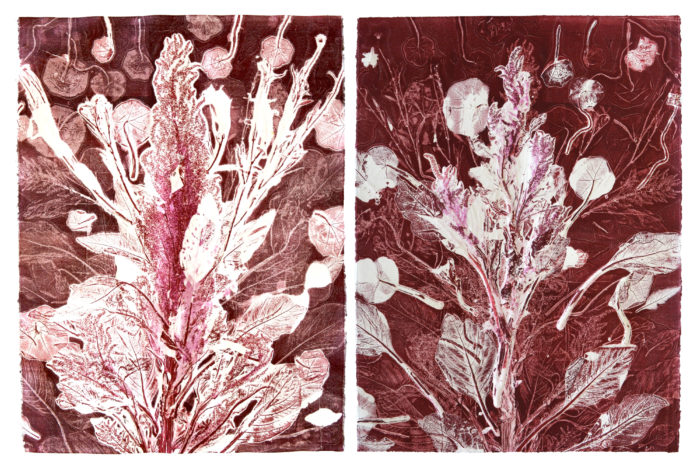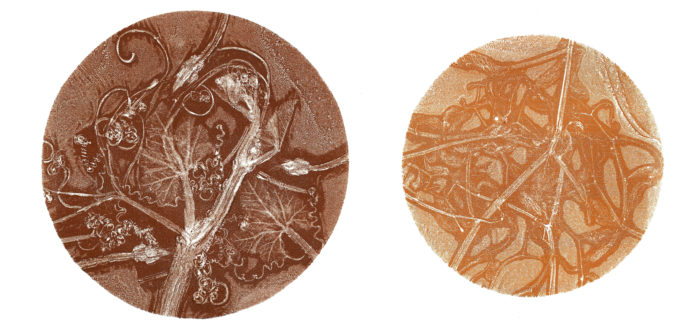How might my garden deepen my relationship to the land? What does it mean to “put the garden to bed”? What if I run the garden through the bed of the printing press? These monotype collographs were created using plants and netting from my 2022 community garden. Bachelor’s buttons, sunflower leaves, cosmos, red amaranth, and more were layered between inked acetate sheets to become the printing plates. In some cases printmaking ink mixes with natural plant pigmentation.

monoprints, 22″ x 30″ each


monoprints, 22″ x 30″ each


monoprint, 10″ x 10″

monoprints, Approximately 10″ x 10″ each

monoprints with natural pigments, 11″ x 14″
These are the same print, documented on Day One (left), versus Day 78 (right). Collaborating with a local scientist, I learned about the pigmentation in the volunteer amaranth plant in my garden, why the leaves have different shades, and how to separate out the red anthocyanins. Here I’ve sent the leaves through the press without ink, allowing the natural pigmentation to stain the paper and ooze out. Over time I watch the prints transform, a challenging reminder of impermanence and my lack of control.

Process Documentation
A work in progress, these images document my beginning investigations into extracting natural pigmentation. Here I’ve made ink from the volunteer red amaranth plant that grew in my 2022 garden, another way to preserve and be in relationship to the land. On paper the ink fades slowly over time. On my skin it implies other narratives.